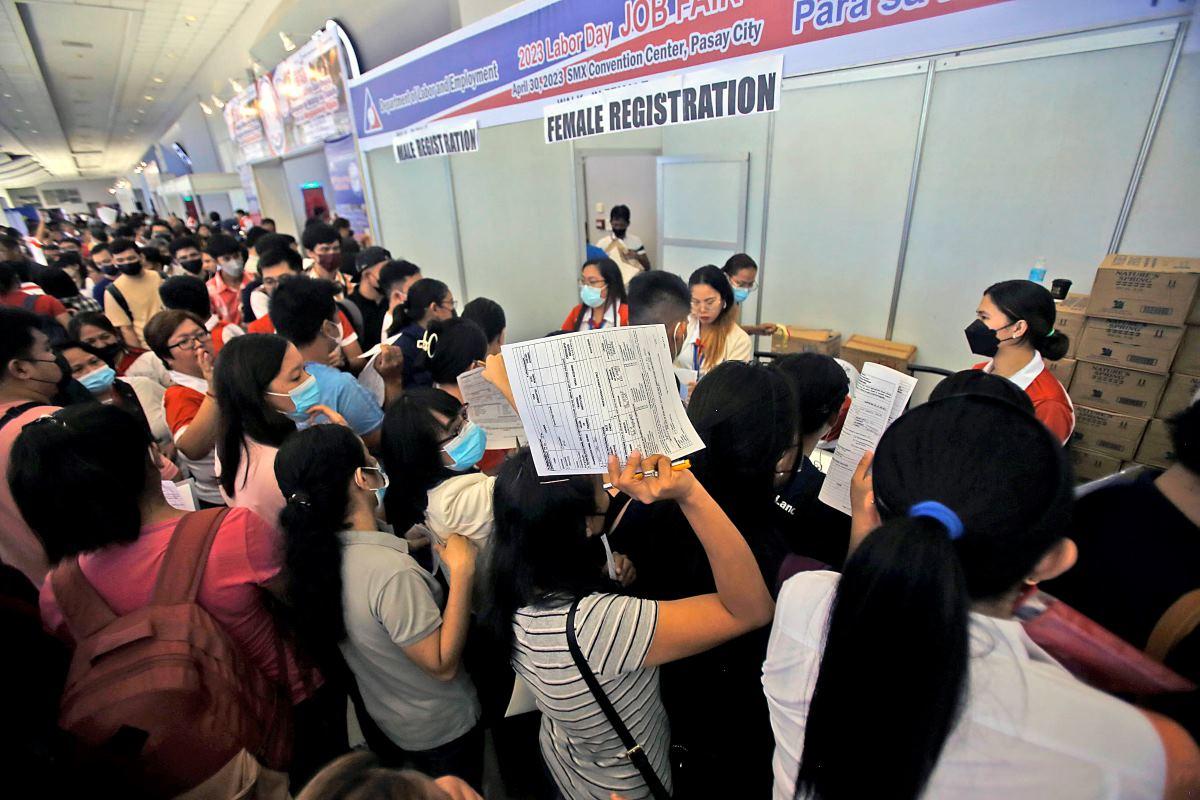Unemployed down, employed up in February —PSA

The number of unemployed Filipinos decreased as employment numbers went up in February on the back of increased demand for labor due to the opening of classes and the beginning of the harvest season.
At a press briefing, Philippine Statistics Authority (PSA) chief and National Statistician Claire Dennis Mapa said the number of jobless persons, ages 15 and above, declined to 1.80 million in February from 2.15 million in January.
This is the lowest number of unemployed individuals since December 2023 when jobless adults stood at 1.60 million.
Year-on-year, the number of unemployed in February this year was also lower compared to the 2.47 million jobless in February 2023.
As a percentage of the total 50.75 million people in the labor force who are actively looking for work, the unemployment rate stood at 3.5%, down from 4.5% in January.
Relatedly, the number of employed individuals increased to 48.95 million from 45.94 million month-on-month.
This translates to an employment rate of 96.5%, up from 95.5% in January.
'Seasonality'
Labor force participation also grew during the period, reaching 50.75 million in February from 48.09 million in January.
Mapa attributed the improvements in both employed and unemployed numbers to “seasonality” amid the opening of classes for colleges and the start of harvest season which created demand for labor during the month.
“These seasonalities have a positive impact on employment,” Mapa said.
In particular, the PSA chief said that the statistics agency observed increases in employed persons in the wholesale and retail trade and agriculture and forestry sub-sectors, adding 1.61 million and 1.03 million, respectively, month-on-month.
“When classes started in February… it created jobs in wholesale and retail trade… that’s one big contributor,” Mapa said.
“In agriculture, harvesting of crops began,” the PSA chief said.
The other sub-sectors that saw increments in the number of employed individuals are as follows:
- Accommodation and food service activities (325,000)
- Construction (231,000)
- Transportation and storage (206,000)
Wage and salary workers accounted for the biggest share of employed persons with 62.9% of the total employed persons in February.
This was followed by self-employed persons without any paid employee at 27.2% and unpaid family workers at 7.8%.
Employers in their own family-operated farm or business had the lowest share of 2%.
Among wage and salary employees, those who work in private establishments have the highest share of 79.3% in the salaried worker class while accounting for 49.9% of the total employed during the period.
Workers in government or government-controlled corporations followed with a share of 13.5% in the salaried worker class while contributing 8.5% to the total employed.
Underemployment
Job quality saw an improvement as underemployment declined to 12.4% from 13.9% in January.
Underemployed persons —those who seek additional hours of work in their present job or to have additional job— decreased to 6.08 million from 6.39 million month-on-month.
In a separate statement, National Economic and Development Authority (NEDA) Secretary Arsenio Balisacan said the Marcos administration remains firm in prioritizing people-centered policies and attracting job-creating investments to support the continued improvement of the Philippine labor market.
“We will also continue to implement measures to address bottlenecks and expedite processes to realize investment pledges, particularly in priority sectors holding much promise, such as renewable energy and critical minerals," said Balisacan.
The NEDA chief added that the Inter-Agency Investment Promotion Coordination Committee is currently coordinating the formulation of the medium- and long-term Foreign Investment Promotion and Marketing Plan.
"We also recognize that the fast-tracked implementation of the government's infrastructure flagship projects, housing program, and recovery of the tourism sector contributed to positive employment outcomes," said Balisacan.?
The country’s chief economic planner said the government will revisit the existing policy governing alternative work modes, such as the Telecommuting Act, and adapt it to the evolving work landscape to address the growing preference for remote work.?
"The government will explore enhancing the potential of part-time work to help promote lifelong learning. A framework for part-time work and similar set-ups can allow workers to retool or upskill without leaving the workforce," the NEDA chief said.
Balisacan said that with the recent issuance of the Implementing Rules and Regulations of the?Trabaho Para sa Bayan?(TPB)?Act, the government will start formulating the TPB plan, which will be the country's master plan for employment generation and recovery. —VAL, GMA Integrated News




